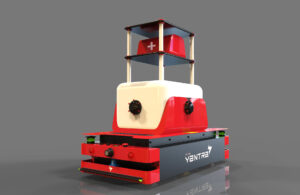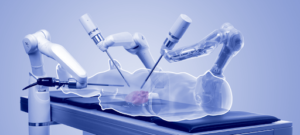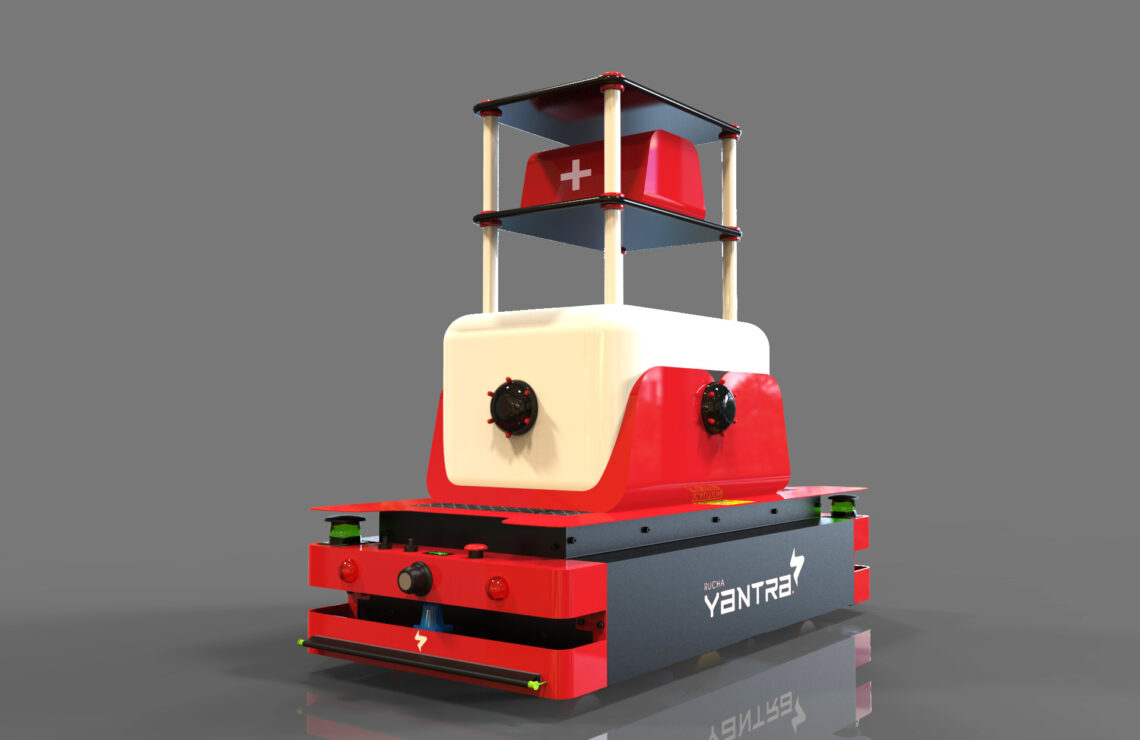 The series starting with this blog was chosen by you – our readers and followers. Thus, we are extra excited about sharing interesting information through the upcoming blogs. We shall be talking about the confluence of 2 industries that are heavily trending at the moment. Robotics and healthcare! Hope you find the series engaging.
The series starting with this blog was chosen by you – our readers and followers. Thus, we are extra excited about sharing interesting information through the upcoming blogs. We shall be talking about the confluence of 2 industries that are heavily trending at the moment. Robotics and healthcare! Hope you find the series engaging.
The stress on greater precision in surgeries, better management of patients and hospitals, and reducing human errors in treatment keeps pushing the healthcare industry to adopt newer technologies. One such technology is robotics. The use of robotics in healthcare can be traced back to the 1980s when used for precise positioning of the cannula for brain biopsies. Over time, its applications diversified and opened new doors for integration with patient care. In this blog, we shall look at four typical applications of robots in healthcare. The following blog will share five more applications. Read on!
Robots in Surgery:
Robotic involvement in surgery can be of two types: active and passive. Active robots use programming and visual data to conduct surgery remotely by a surgeon, while passive robots require direct control by a surgeon. In the latter case, robots only provide surgical assistance.
Robot-assisted surgery offers greater control, precision, and flexibility to surgeons. Advantages over non-robotic surgery include fewer complications, lesser loss of blood, and a quicker recovery period. It also can benefit doctors by reducing their fatigue which is common in lengthy and complex non-robotic surgeries.
precision, and flexibility to surgeons. Advantages over non-robotic surgery include fewer complications, lesser loss of blood, and a quicker recovery period. It also can benefit doctors by reducing their fatigue which is common in lengthy and complex non-robotic surgeries.
In many new-age surgeries, such as Laparoscopic and Spine, minimal invasion is made possible due to remote-controlled surgical devices. Miniature cameras lead the surgical instruments through a small cut on the body; surgeons can view and perform the entire surgery using a console.
Auxiliary Robots for assistance:
Laborious tasks such as restocking and cleaning take up a lot of time that nurses can utilize for better patient care. Robots can restock medical items, transport them from one place to other in a hospital, and spray disinfectants and cleaning agents across the facilities without any human intervention. Check out how Yantra’s robot, Vighnaharta, helps a hospital manage the cleaning and transport of material ( https://youtu.be/Sn8e_ZCTMFQ). Robots can help them automate such tasks and focus on activities that require specific human traits such as decision making, creative solutions, care, and empathy. With advancements in robotic technology, repetitive tasks such as drawing blood, checking vitals, and continuously monitoring patients’ conditions can also be ‘robotized.’
Robotic Exoskeletons:
Robotic exoskeletons are wearable electromechanical augmentative devices that enhance the physical performance of the wearer or are used as orthotic devices for rehabilitation or locomotion assistance. They can help a person walk and hold things again post-paralysis.
Robotic exoskeletons lead to decreased chronic pain and reduced energy required by the wearer to move joints as the load shifts onto the exoskeleton. Overall they act as a lifeline and provide a sense of freedom from chronic physical ailments.
Robots for maintaining hospital hygiene:
Recently robots have been programmed to disinfect hospital premises where infections need to be controlled. Apart from spraying disinfectants and cleaning agents, some mechanical robots also emit ultra-violet light to disinfect surgical rooms and care homes. The robots produce UV-C rays ranging from 250 to 280 manometers that kill viruses and bacteria without using chemicals. Given the onslaught of Covid-19 infection, an increasing load of work on hospital staff and the need to disinfect premises regularly have brought robotic assistance to the forefront. From now on, we shall see a lot of robots being used for these purposes (check out how Yantra’s sanitation robot works https://youtu.be/2VA72G0I-Uo).
Yantra specializes in indigenous designing and development, and manufacturing of standard and tailor-made mobile robotic systems. During the initial stages of the pandemic, we felt we needed to contribute using our knowledge and expertise; thus, we developed a robot aimed explicitly at helping hospitals manage the pandemic better. We shall continue to develop robots that help various industries automate their tasks and improve performances.
Stay tuned to our Knowledge Corner as we look at more exciting robotics applications in healthcare in the next blog.



